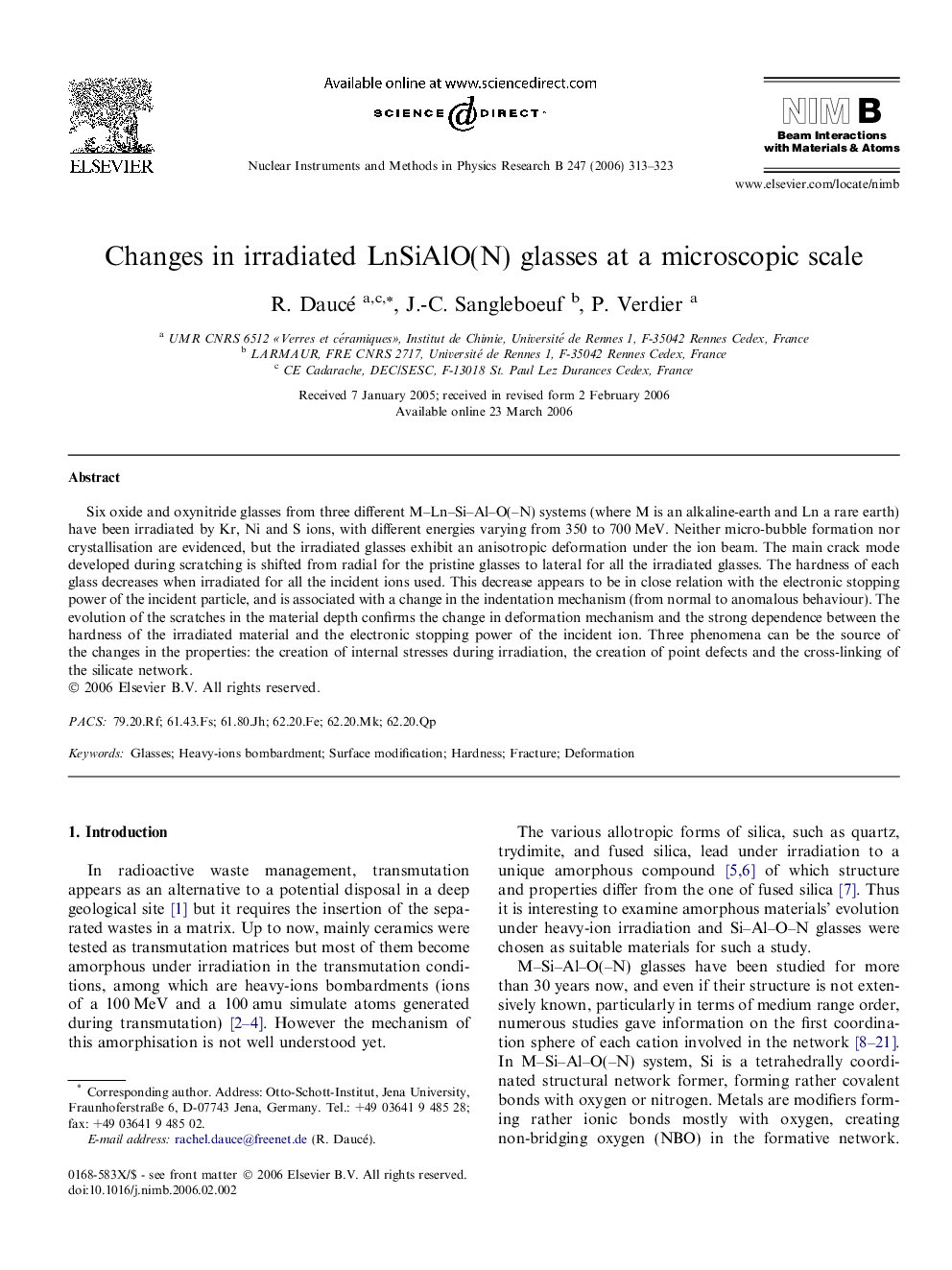| Article ID | Journal | Published Year | Pages | File Type |
|---|---|---|---|---|
| 1688034 | Nuclear Instruments and Methods in Physics Research Section B: Beam Interactions with Materials and Atoms | 2006 | 11 Pages |
Six oxide and oxynitride glasses from three different M–Ln–Si–Al–O(–N) systems (where M is an alkaline-earth and Ln a rare earth) have been irradiated by Kr, Ni and S ions, with different energies varying from 350 to 700 MeV. Neither micro-bubble formation nor crystallisation are evidenced, but the irradiated glasses exhibit an anisotropic deformation under the ion beam. The main crack mode developed during scratching is shifted from radial for the pristine glasses to lateral for all the irradiated glasses. The hardness of each glass decreases when irradiated for all the incident ions used. This decrease appears to be in close relation with the electronic stopping power of the incident particle, and is associated with a change in the indentation mechanism (from normal to anomalous behaviour). The evolution of the scratches in the material depth confirms the change in deformation mechanism and the strong dependence between the hardness of the irradiated material and the electronic stopping power of the incident ion. Three phenomena can be the source of the changes in the properties: the creation of internal stresses during irradiation, the creation of point defects and the cross-linking of the silicate network.
